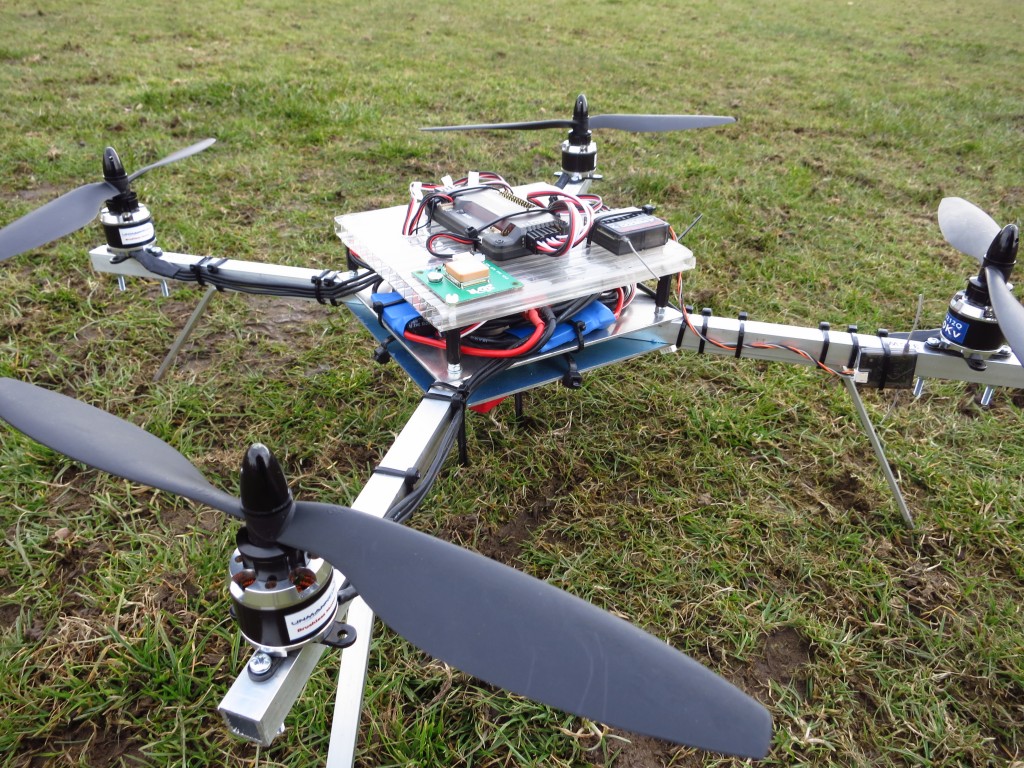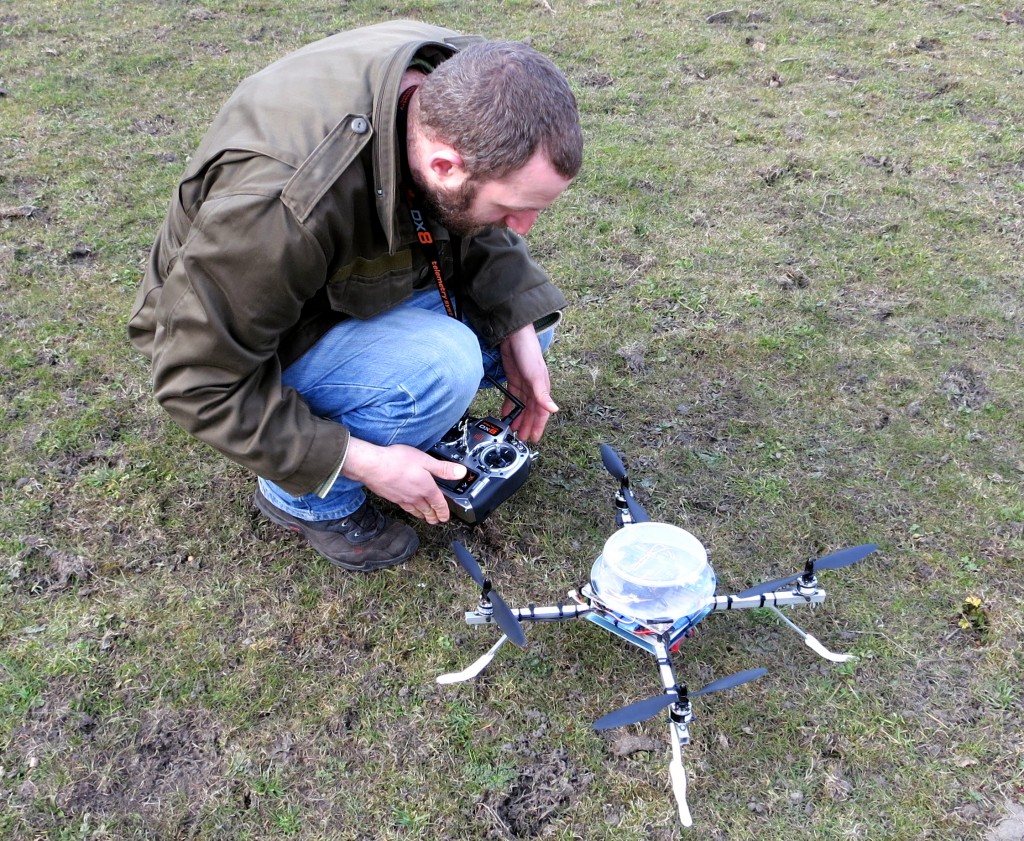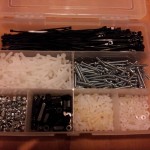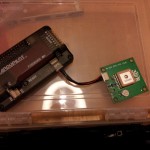
I’ve been doing a few test flights of my Arducopter-based quadcopter over the last couple of weeks, when it wasn’t snowing. The first flight test wasn’t so successful. Whilst it flew, I couldn’t get it much above about 1-2 metres off the ground even at full throttle. This turned out to be due to miscalibrated ESCs, which didn’t know what a full throttle signal from my transmitter looked like.
Once recalibrated, it flew pretty well but my inexperience led to a few crash landings and a few broken propellers (no major damage though). It also drifted around quite a bit, but I improved that by recalibrating the accelerometers much more carefully.
I tested out the “return to launch” (RTL) feature a few times too. The idea is that the quadcopter remembers the gps coordinates of the launch point, and when RTL mode is enabled, it flies home automatically. The exact behaviour involves it flying up to a safe altitude (above any possible trees and such), then flies home, holds it’s position there for 5 seconds and then lands.
The first time I tested this, it seemed to work but instead of holding its position, it flew off into a nearby tree. I tested it a couple more times and it worked once, but veered off again another time. I later discovered reported problems with gps accuracy with the Arducopter firmware version I was using (2.9.1). Upgrading to 2.9.1b seems to have improved the behaviour a lot, but RTL isn’t yet something I’m comfortable trusting.
I did discover that the arducopter firmware keeps quite detailed telemetry logs of its flights, along with gps coordinates and altitude. Very good for figuring out what went wrong afterwards.
Control-wise, a major breakthrough for me was realising I didn’t necessarily need to keep pointing the “front” of the aircraft where I wanted to fly. It can go in any direction at any time, you just need to keep track of where the front is pointing to know where roll and pitch will get you. This is admittedly a bit hard to keep track of, so I think I’ll paint the legs or something to help with that. When it’s up high, especially with the light behind it, it’s quite hard to tell whether it is turning towards or away from you. Need more practise.
I also had some problems with the legs sticking in the ground (or breaking) on heavy landings. I’m making some improvements and might blog about that later.
And I stuck an old plastic takeaway container on top to protect a bit from rain and snow. Which worked well until I crash landed it today and smashed it.
And today, I strapped an old Android smartphone to it and recorded a first person view of a flight. It was an old cheap phone so the video quality is poor, but it’s still exciting. I’m researching what cameras I can get to record higher definition video atm – I’ll post about that later.
Overall, it’s been quite stable and much sturdier than I’d imagined. It’s a little stressful to fly but I’ve managed to resist the urge to panic and drop throttle any time I’m not certain what is going on. I’d definitely recommend doing your test flights in a large empty grassy field (not a hard road surface), well away from people and buying quite a few spare propellers (which I did).
I’ve gathered all my videos so far into this Youtube playlist.



